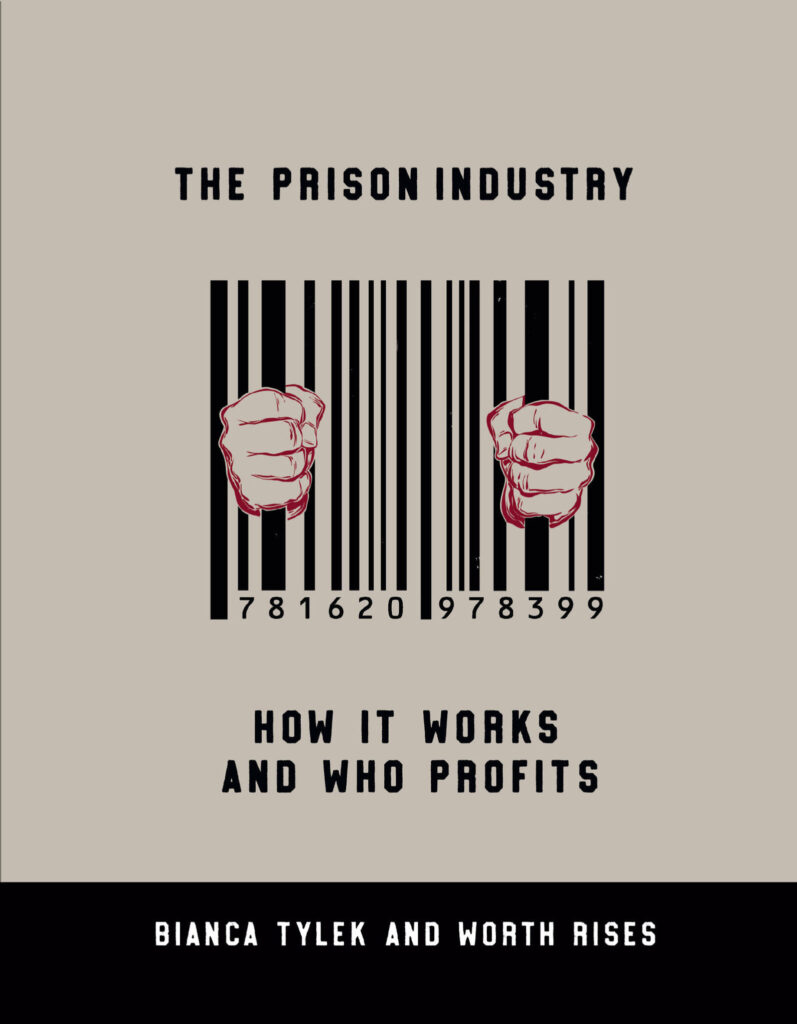Prison and jail administrators have long weaponized food—or the lack thereof—to inflict additional punishment on incarcerated people. The Supreme Court responded to the most egregious of these practices in 1978 when it ruled in Hutto v. Finney that serving incarcerated people calorie-deficient and otherwise unhealthy diets for a prolonged period of time constituted a violation of the Eighth Amendment’s protection against cruel and unusual punishment. This meant that administrators could no longer force people behind bars to subsist on bread, water, and gruel. Challenged with improving food while facing rapid population growth in the late twentieth century, administrators turned to the private sector that promised quality food service at lower costs.
Since then, corporations have maintained a regular presence in the correctional food space. They manufacture and distribute raw and prepackaged ingredients as well as manage food preparation and service in prison and jail kitchens. As a former Arizona food service supervisor explained in Erika Camplin’s Prison Food in America, “Though the inmates do most of the work, and the corrections officers are there to maintain order, it is civilian contractors who are often responsible for every aspect of the meal preparation: inmate training, adherence to recipes, ensuring food safety standards are met, theft prevention, portion control, and general quality of service.” But rather than improving nutritional value and quality, privatization exacerbated the carceral food problem. In an article for Citizens Research Council of Michigan, Karley Abramson notes that privatized food service in the state’s prisons has “been the source of almost continuous scandal, embarrassment, and administrative difficulty.” Yet few of the endless lawsuits regarding food in prisons and jails since Hutto have been successful.
Failures in food service have forced incarcerated people to depend on commissary (on-site convenience stores first introduced in federal prisons in 1930) and care packages sent by loved ones for food as well as hygiene and clothing essentials—all of which are insufficiently provided by correctional administrators. But the very corporations that commit these food service atrocities are often also entrusted with operating commissaries and care package programs, which means that providing substandard food service is rewarded with increased revenue in commissary and care package sales. But the food sold in commissary and care packages also fails to meet the nutritional needs of incarcerated people.
In fact, the one place where incarcerated people will, at times, find nutritional and emotional reprieve is in the vending machines of visit rooms. Understanding the power of a shared meal, corporations sign exclusive contracts to stock visit room vending machines with expensive, ready-made food—a cost that the occasion of a visit might warrant.
Correctional administrators outsource food service to corporations to reduce facility operating costs, with detrimental consequences. Moreover, they allow their vendors to use incarcerated people—paid just pennies an hour, if anything—to conduct their food service from beginning to end.
Few laws regulate food service in correctional facilities, so contractors set their own standards for quality and safety. Considering little more than caloric requirements, they serve food that lacks nutritional content. They use inexpensive and unhealthy fillers or substitutes like margarine and soy to increase caloric intake, leaving people hungry; exacerbating chronic health conditions such as diabetes, hypertension, and heart disease; and creating new health risks. They even serve food labeled “not fit for human consumption” upon arrival—its own kind of psychological warfare for those working in the kitchen.
More from our decarceral brainstorm
Inquest, finalist for the 2025 National Magazine Award for General Excellence, brings you insights from the people working to create a world without mass incarceration.
Sign up for our newsletter to get the latest in your inbox every Saturday.
Newsletter
Perhaps still worse, in efforts to avoid waste costs, these corporations ration food dangerously. They serve food that is old or contaminated or serve inadequate portions, if they do not run out altogether. When Aramark was the vendor in Florida, incarcerated food service worker and Prison Legal News journalist David Reutter says that the company often provided too-small portions or left out ingredients entirely. “On one occasion when I was assigned as a kitchen worker,” he recalls, “an Aramark employee berated me for draining water off the vegetables after they were cooked. ‘Water is part of the serving,’ the employee said.” In 2014 an investigation conducted by the Southern Center for Human Rights into the Gordon County Jail in Georgia, which had contracted with Trinity Services Group, revealed that incarcerated people were eating toothpaste, toilet paper, and syrup packets out of hunger. Human rights violations like these committed by correctional food service providers are endless.
Michigan’s experiment with private food service vendors is perhaps the most notorious. In 2014 leaked emails revealed that an Aramark employee retrieved and reserved food that had been thrown in the trash. The following year, the state’s correctional administrators terminated a three-year contract with Aramark early after a slew of controversies and contracted with Trinity Services Group instead. But in the first fifteen months of the new contract, the state fined Trinity Services Group over $2 million for various violations, including unauthorized meal substitutions, delays in serving meals, and sanitation violations.
After two failed experiments with private food service providers, Governor Rick Snyder announced in 2018 that the state would move back to running its own prison food service. Michigan’s decision to bring food service back in-house was a rare one. Despite the abundance of these stories and, in many cases, agreement among incarcerated people and corrections officials about the shortcomings of private food service, many prison and jail administrators continue to outsource food service to corporations that put profit over people to deprive them of something as simple as food.
In 2013, for example, Aramark was awarded a two-year $110 million contract to provide food service across Ohio’s prisons. Less than a year later, there were numerous reports of service failures, including sixty-five instances when it failed to serve food or ran out of it and five instances when it served food with maggots. Though the state took the rare step of penalizing the corporation, Aramark took the $272,300 in fines in stride and won the next contract award with the state in 2015, despite a cheaper competing bid from a public union.
However, perhaps the most egregious example of food-related abuse in corrections facilities occurred in Alabama, where a Depression-era law allows sheriffs to personally pocket any savings from food provision in their jails. What follows is probably obvious: sheriffs skimp on food costs for the people in their custody to bolster their personal income. In Etowah County, for instance, the sheriff kept more than $750,000 of taxpayer money intended to feed people at the county’s jail over a three-year period and bought himself a beach home. Altogether, the sheriff owns $1.7 million in properties on a $93,000 annual salary. Meanwhile, people incarcerated at the jail reported going hungry.
Unsurprisingly, these efforts to cut food costs have had a really damaging impact on the lives of incarcerated people. Incarcerated people are over six times more likely to suffer from a food-related illness than people in the general public. Between 1998 and 2014, correctional facilities reported 200 foodborne outbreaks and 20,625 illnesses, 204 hospitalizations, and 5 deaths resulting from food sickness.
Finally, illness is not the only consequence of cost-cutting measures; enslavement is yet another. Many prisons, some of which are on former plantations in the South, put incarcerated people to work on farms to harvest food for the facility and generate revenue for the agency. Today, the Federal Bureau of Prisons and all fifty states have incarcerated people working in agriculture. In Georgia, for example, over 300 incarcerated people work, completely unpaid, to produce 42 percent of food required by the state’s prisons.
While prison and jail administrators weaponize food to exact nutritional punishment and enslave incarcerated people, incarcerated people have used their bodies as counter-weapons in political struggles, practicing what some have termed, according to Anthony Ryan Hatch, “gastronomical resistance.” Throughout history, across political movements, people with no weapons have used their bodies to fight injustice and oppression. Incarcerated people have time and time again effectively used hunger strikes, one form of gastronomical resistance, to protest prison conditions and labor practices. In 2013, for example, nearly 30,000 incarcerated people in California participated in a hunger strike that led to the end of indefinite solitary confinement in state prisons.
In prisons and jails, commissaries can offer an expansive reprieve from the depravity of kitchen food. While egregiously priced, off-brand products can be innovatively transformed into pleasurable community meals that serve as another form of gastronomical resistance. Yet commissary food comes with its own problems. Prepackaged foods are high in sugar and sodium, for example, and can cause or exacerbate chronic health conditions, leaving incarcerated people to choose between two types of poison while private corporations collect the spoils.
Some states and municipalities stock and operate their own commissaries, usually charging a markup on the resale of products to cover operating costs and even turn a profit. Many others choose to outsource their commissary operations to private corporations in exchange for a commission on sales. While the latter model is more profitable for commissary corporations, they benefit from both because they manufacture and supply many of the unique products sold in commissaries in either case. Under both models, operators inflate product prices while offering substandard brands to generate more profit. With a captive consumer, sales are essentially guaranteed, especially since commissary is used to meet basic food, hygiene, and clothing needs that have not been met by prison and jail administrators.
The commissary market, like food services, is similarly dominated by just a few familiar corporations: Keefe Group, Trinity Services Group, Union Supply, and Aramark. Keefe Group, the market’s largest player, entered the business in 1975; Trinity Services Group’s commissary business also dates back to the 1970s through its subsidiary Swanson Services; Union Supply emerged in 1991; and Aramark launched its commissary brand iCare in 2006. Today, Keefe Group serves 650,000 incarcerated people in 14 states and brings in more than $1 billion in revenues a year across all its business lines. Most commissary vendors also have a care package business line.
The commissary market overall was estimated to be worth $1.8 billion in 2016, but recent data suggests a more accurate estimate could run far higher. A survey of commissary sales in three state prison agencies revealed that incarcerated people spend an average of $947 annually on commissary, 73 percent of which is spent on food. And while only 17 states outsource the operation of prison commissaries to corporations, that figure increased 21 percent between 2013 and 2020. In jails, outsourcing commissary operations to corporations is more common. Importantly, commissary operators also make money charging families hefty deposit fees to transfer money into their loved ones’ commissary accounts.
Besides foods, incarcerated people often purchase simple hygiene products like shampoo and deodorant in commissary. These products are often incredibly low in quality—lotion the consistency of water—and yet exorbitantly priced. And culture-specific hygiene products are even harder to come by and more egregiously priced. In most cases, it is the families supporting incarcerated loved ones who provide funds to purchase these items, given the insufficiency and subsequent garnishment of prison wages, if wages are paid at all. A 2018 study of three state prison agencies found that, on average, incarcerated people spent $947 annually on commissary products, substantially more than the $180 to $660 typically earned annually by incarcerated people working in these states. And jails offer even fewer paid job opportunities, meaning families supporting loved ones in pretrial detention, who often cannot afford to pay bail, are also exploited by these commissary schemes.
Recognizing that commissary falls short of meeting the basic human needs of incarcerated people, many corrections agencies have historically allowed incarcerated people to receive homemade care packages from family, friends, and support groups. These care packages are subject to strict content guidelines and weight restrictions that vary from institution to institution and can change without notice.
Increasingly, however, corporations are stepping in and convincing agencies to prohibit homemade care packages and introduce sterile, privatized care package programs that give families a limited menu of egregiously priced “preapproved” products. Prison and jail administrators receive commissions and corporations collect profits hand over fist. In its bid for the West Virginia contract, for example, Union Supply Group, which runs the care package program Union Supply Direct, projected that the state would earn about $95,000 per year thanks to a 17 percent commission rate on annual sales.
Privatized care package programs are no more than external-facing commissary stores. In fact, most care package programs are run by commissary operators. They merely allow families to shop directly from a comparably terrible menu with a few more brand name items. When these programs are introduced, families are generally barred from sending fresh fruit and vegetables or filling bags with cheaper items from their local bodega, dollar store, or superstore. Instead, they must pay much more to the few corporations that control the care package program for their loved one’s facility. And families that may have previously used social benefits to pay for items included in homemade care packages no longer have that option either, putting care packages even further out of reach for the economically distressed communities targeted by the criminal legal system. Moreover, ordering packages is not easy for people without Internet access or computer literacy, which is not uncommon for those impacted by incarceration.
Jasma Credle, a formerly incarcerated New Yorker, emphasizes the financial barriers on family members on the outside. “The truth is,” she said, “prisons provide little of what you really need to survive—from sustenance to basic hygiene. Instead, you need to rely on your family for that. But most families supporting people behind bars don’t have money. They can’t afford to give their loved ones doing time the money needed to buy even a shred of dignity inside.”
In 2018 New York piloted a privatized care package program. Of the six approved vendors the state selected, only one sold menstrual hygiene products—at four times the cost at the local chain retailer. Thankfully, advocates forced the state to cancel the pilot and prevented it from taking permanent hold. But, in 2022, New York introduced a revised policy. Despite expanding the list of approved vendors beyond typical prison corporations, the new directive still bans incarcerated people from receiving food packages from family and friends outside. Other states are considering or have already implemented similar policies.
Limiting the items that incarcerated people can receive and privatizing care packages is not just financially exploitative, but also emotionally depraved. Homemade packages are sent and received with love, carefully crafted to include favorite snacks and childhood reminders. Care packages built in warehouses by strangers cannot carry the same weight. Privatizing care packages removes some of the last reminders of the outside world that bring hope to an otherwise hopeless place.
The exploitation of basic human needs like food is both anathema to human rights and the perfect encapsulation of how the prison industry functions. Corporations, and sometimes government agencies, profit by spending as little as possible to feed those in their care. Worse yet, failures in one service line can, in fact, drive revenue in another, creating remarkably dangerous incentives. Legal, regulatory, and procurement weaknesses allow corporations to avoid any meaningful or long-lasting consequences for their dehumanizing, reprehensible food practices. The state of prison and jail food is a crisis within a crisis.
Copyright © 2025 by Bianca Tylek and Worth Rises. This excerpt originally appeared in The Prison Industry: How It Works and Who Profits, published by The New Press. Reprinted here with permission.
Image: Leonard J Matthews / Flickr


